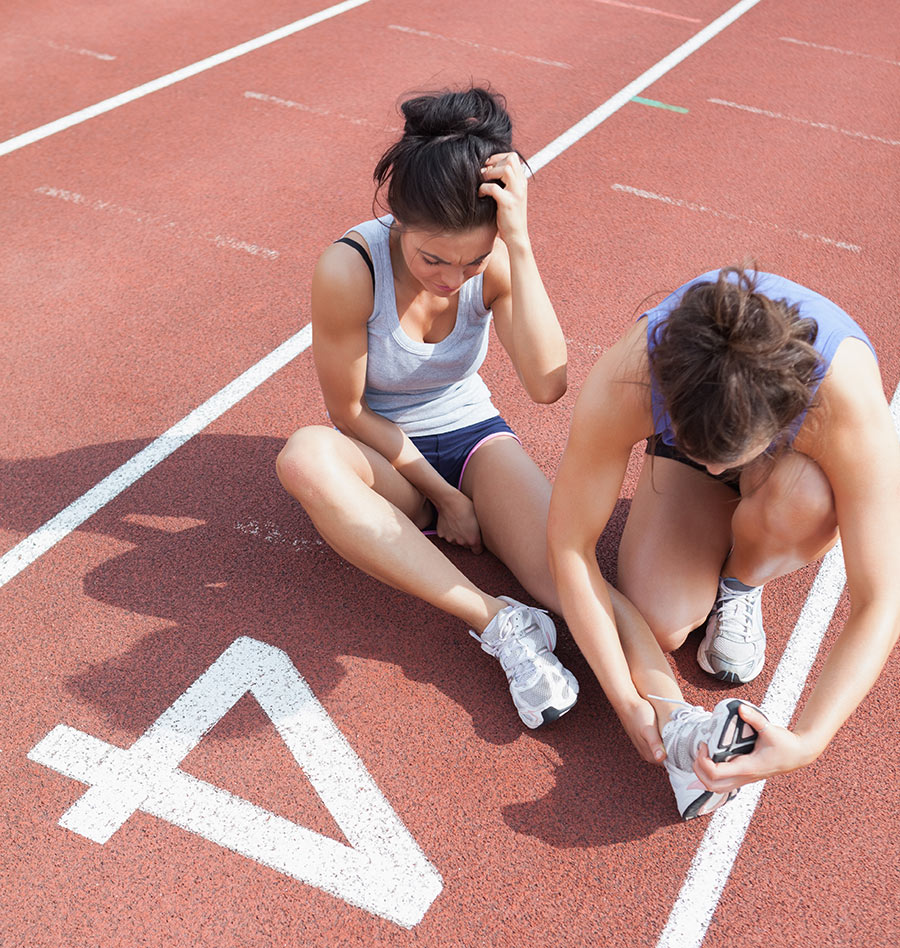How to keep young athletes injury-free and in the game
Sports are an important part of life for many students. Participating in sports are a fun way for youth to build skills in leadership, teamwork, time management, and responsibility. Maybe most importantly, sports are fun.
Injuries can take the fun out of the game fast. The orthopaedic and sports medicine team at Roper St. Francis Healthcare offers these tips to keep your student athlete injury-free.
Types of injuries
Acute injuries happen suddenly, for example, during a fall or a collision of two or more athletes. According to Roper St. Francis Healthcare orthopaedic surgeon Robert Sullivan, MD, the most prevalent types of injuries include:
- Sprains and strains – soft-tissue injuries to the muscles, tendons and ligaments
- Lower extremity injuries – fractures, dislocations, ligament and muscle tears, and tendon ruptures or detachment affecting the leg, ankle, knee or hip
- Upper extremity injuries – partial or full tendon tears in the elbow, hand, and rotator cuff in the shoulder
Overuse injuries develop gradually through repetitive activity or from training errors. This includes ramping up activity too fast without proper warmup (5-10 minutes of stretching, strength and cardiovascular exercise) or exercising too long without adequate rest and recovery time.
“Overwhelmingly, overuse injuries are most often found in track and cross country athletes, both males and females,” says Dr. Sullivan. “Stress fractures and tendinopathy, or tendinitis, which usually affects the ankle, are probably the most prevalent overuse injuries. There’s a higher rate of stress fractures in females.” This is because of hormonal, bone density and nutritional differences between girls and boys.
Who is at risk
The risk for a particular injury depends on the sport and the player’s age. “Especially in contact sports, you’re going to see a higher level of injury for younger athletes that are still growing,” says Dr. Sullivan. “This mostly affects freshman and sophomore boys.” Injury risk for boys further increases during their junior and senior years as their size and speed increases.
High-risk contact sports include football, hockey, wrestling and basketball. Additionally, gymnastics and cheerleading are high-risk activities, not because there are so many injuries, but because there’s a higher risk for a catastrophic injury to the spine or skull.
Injury prevention and treatment
Teams today have a comprehensive approach to preventing and treating injuries, both acute and those resulting from overuse.
“Injury prevention strategies include core conditioning, general sports training and cross-training as well as training to change the athlete’s mechanics, meaning how they jump and how they land,” says Dr. Sullivan.
Other factors include better protective equipment, changes in rules, and increased awareness that concussion can happen during injury. A concussion is a type of traumatic brain injury—or TBI—caused by a bump, blow, or jolt to the head or by a hit to the body that causes the head and brain to move rapidly back and forth. “If you have an impact injury during a football game, you may have a concussion along with it. It goes hand-in-hand,” says Dr. Sullivan. ”
An injury can sideline an athlete for days, weeks or even months, depending on the type. Serious impact injuries to lower and upper extremities, like fractures, dislocations and muscle tears, may require a trip to the ER and potentially surgery. Overuse injuries, like stress fractures, often heal on their own when activity is paused.
When to see a doctor
Whether you have a routine sprain or chronic pain from an old injury, the Roper St. Francis Healthcare sports medicine team can get you back in the game. Our board certified doctors work closely with athletic trainers and physical therapy specialists to make sure you can return to your favorite activities pain-free.
Seek immediate medical care if you have an injury like a dislocated shoulder or broken bone. Symptoms may include:
- Inability to move a joint, arm or leg
- Inability to stand or walk
- Swelling in the joint, instability or immobility
- Visible deformity in the injured area
- Pain that does not go away
Make an appointment with a sports medicine specialist or get more information.

